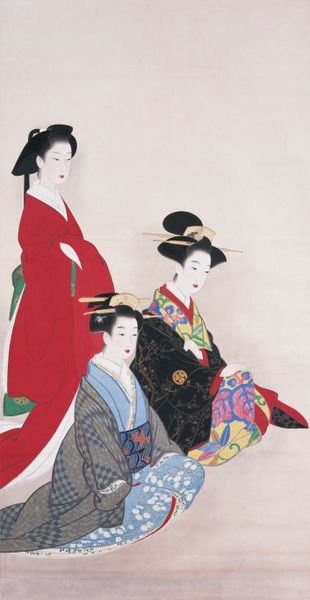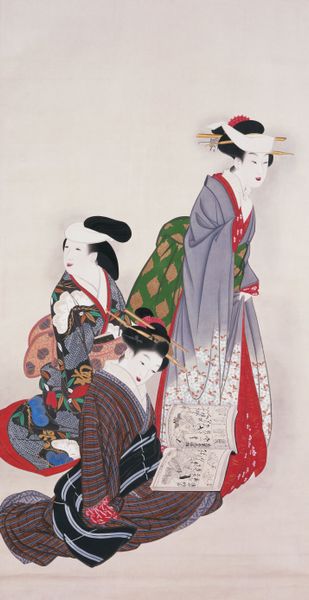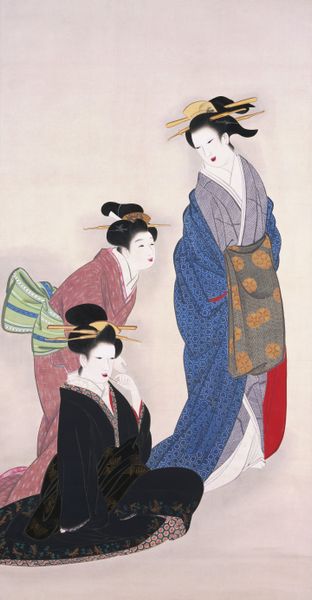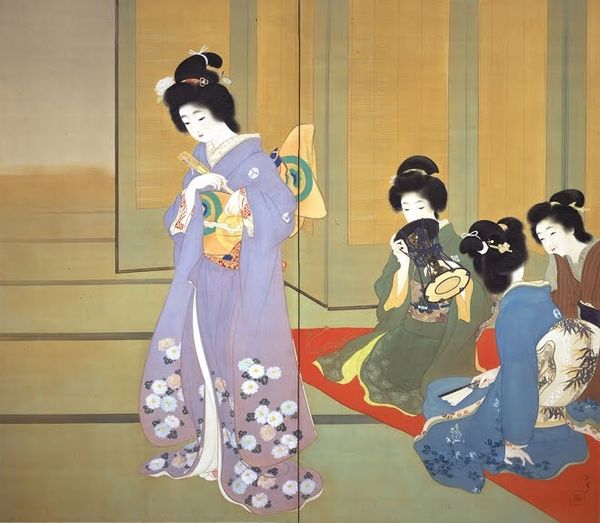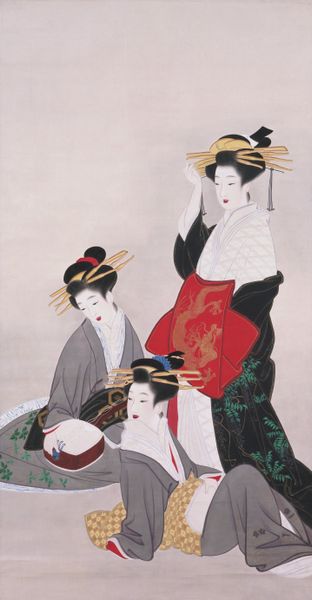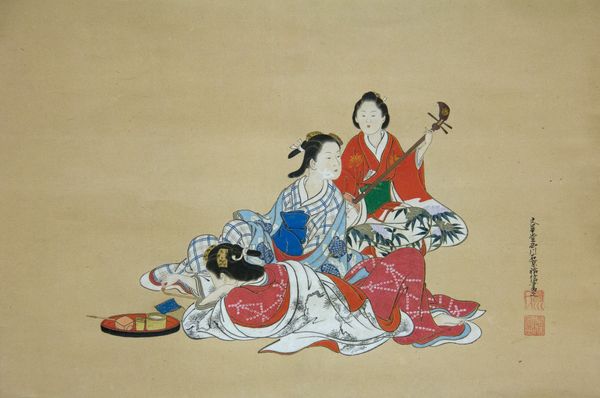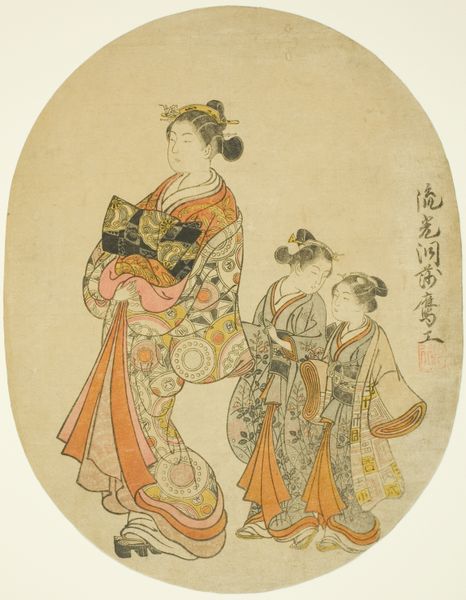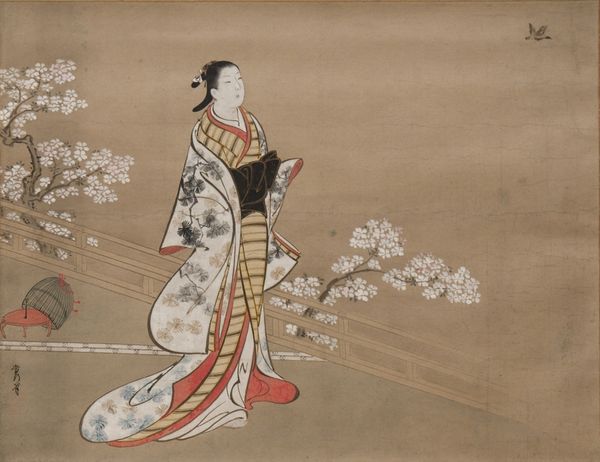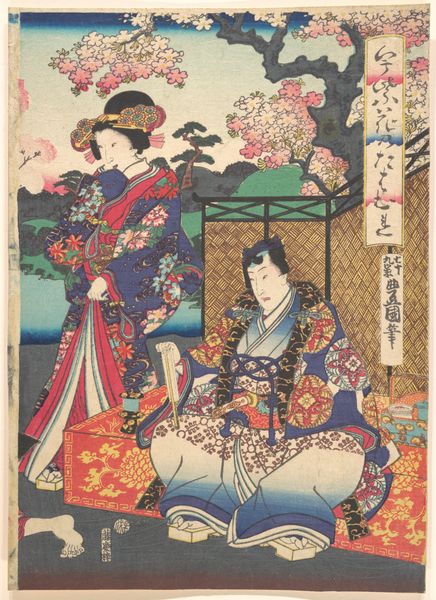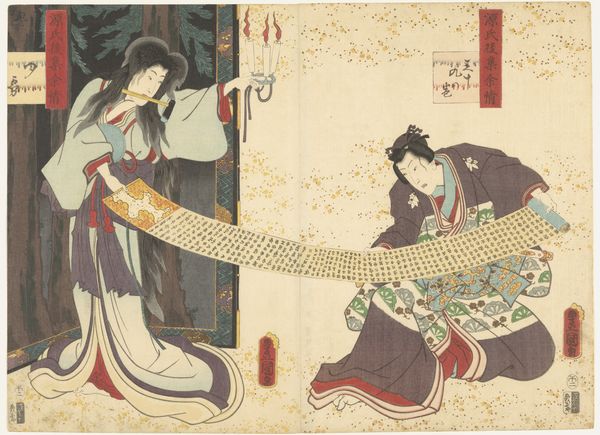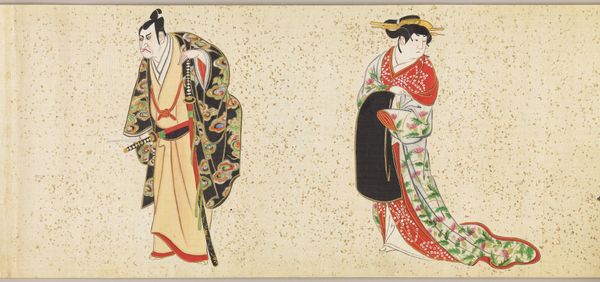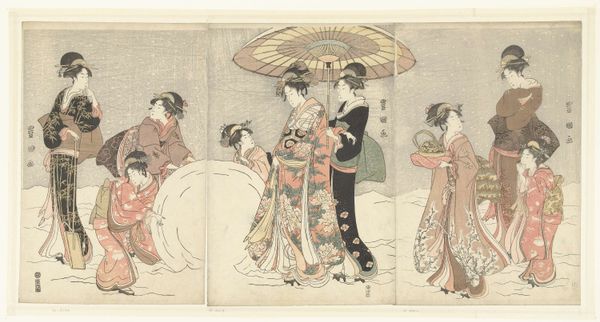
paper, hanging-scroll, ink, color-on-paper
#
portrait
#
asian-art
#
ukiyo-e
#
paper
#
hanging-scroll
#
ink
#
color-on-paper
#
genre-painting
#
portrait art
Dimensions: 70 × 36 5/8 in. (177.8 × 93.03 cm) (image)86 3/4 × 42 1/2 in. (220.35 × 107.95 cm) (mount)
Copyright: Public Domain
Editor: This is “Working Girls” by Yamaguchi Soken, a color-on-paper hanging scroll from around the 19th century. It's currently at the Minneapolis Institute of Art. The women's garments are beautiful and ornate. What can you tell me about the materiality of this work? Curator: Consider the materials themselves: ink and color on paper. The paper's very production involves labor, transforming raw material into a surface for representation. These are not elite women idling, but figures whose existence is defined by their labor, evidenced in their gestures and attire. Editor: So the very creation of the piece, including the scroll form itself, reinforces the subject matter? Curator: Precisely! The scroll format also implies a domestic context – meant to be viewed intimately. Also, reflect on the pigment sources; what would it take to create these striking colours? Whose labor contributed to those beautiful hues? Editor: That makes me think about the commodification of art, the materials themselves embodying different levels of economic exchange before becoming a completed piece of work. Curator: Exactly! Furthermore, the use of ukiyo-e, often mass-produced, questions the high/low art divide. These images were made accessible to a wider audience, reflecting a shift in art production and consumption. Does that influence your view? Editor: Definitely. Considering the socio-economic implications behind seemingly simple materials like paper and ink provides a fascinating and more complete understanding of "Working Girls." Thank you! Curator: My pleasure! Remember to always ask about the “how” and “why” of making when you approach art.
Comments
minneapolisinstituteofart almost 2 years ago
⋮
In the Edo period, the material and design of kimono were strictly regulated by the government along class lines, such that class and occupation were identifiable by costumes and hairstyles. Here (from left to right) are ladies of the warrior class, wives of merchants, young maidens, working girls, and women in the demimonde. Soken’s extraordinary brush control and use of pigments can be seen in the delicate hairlines and the texture of complexions and make-up. The son of a kimono merchant, he depicted magnificent kimono with delicate folds suggesting the body under the fabric.
Join the conversation
Join millions of artists and users on Artera today and experience the ultimate creative platform.
